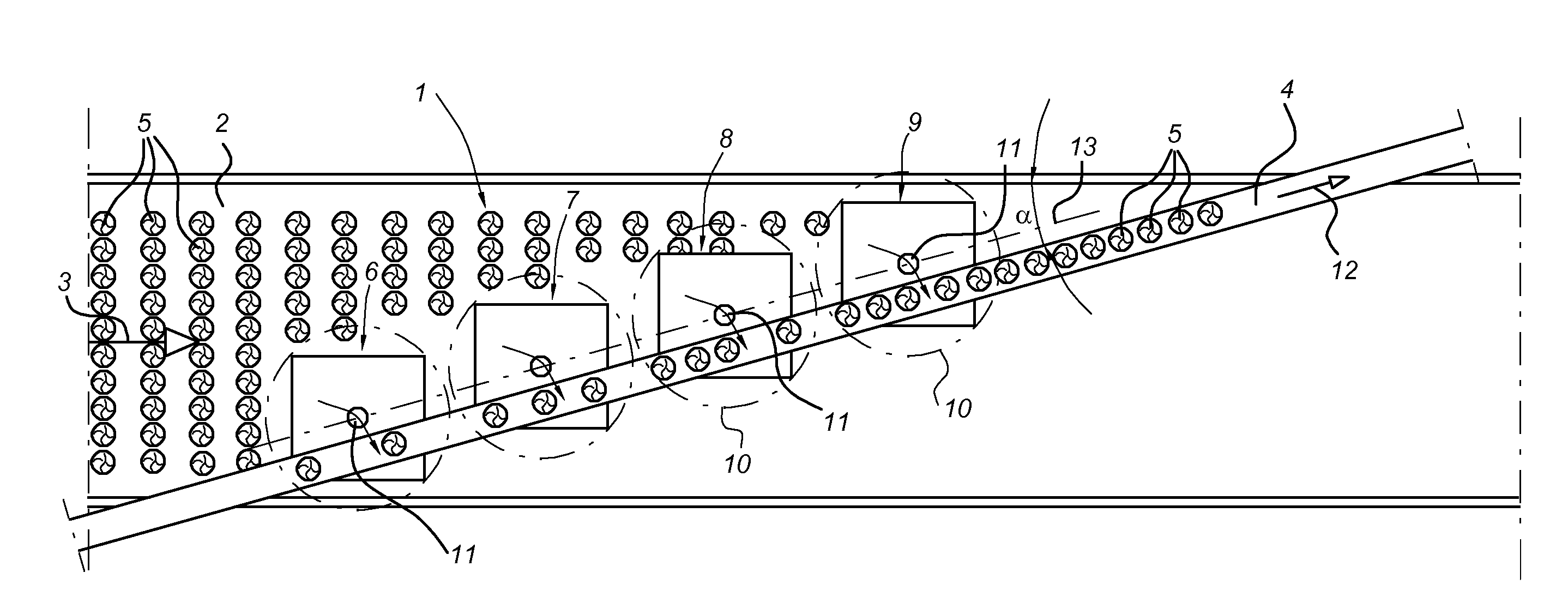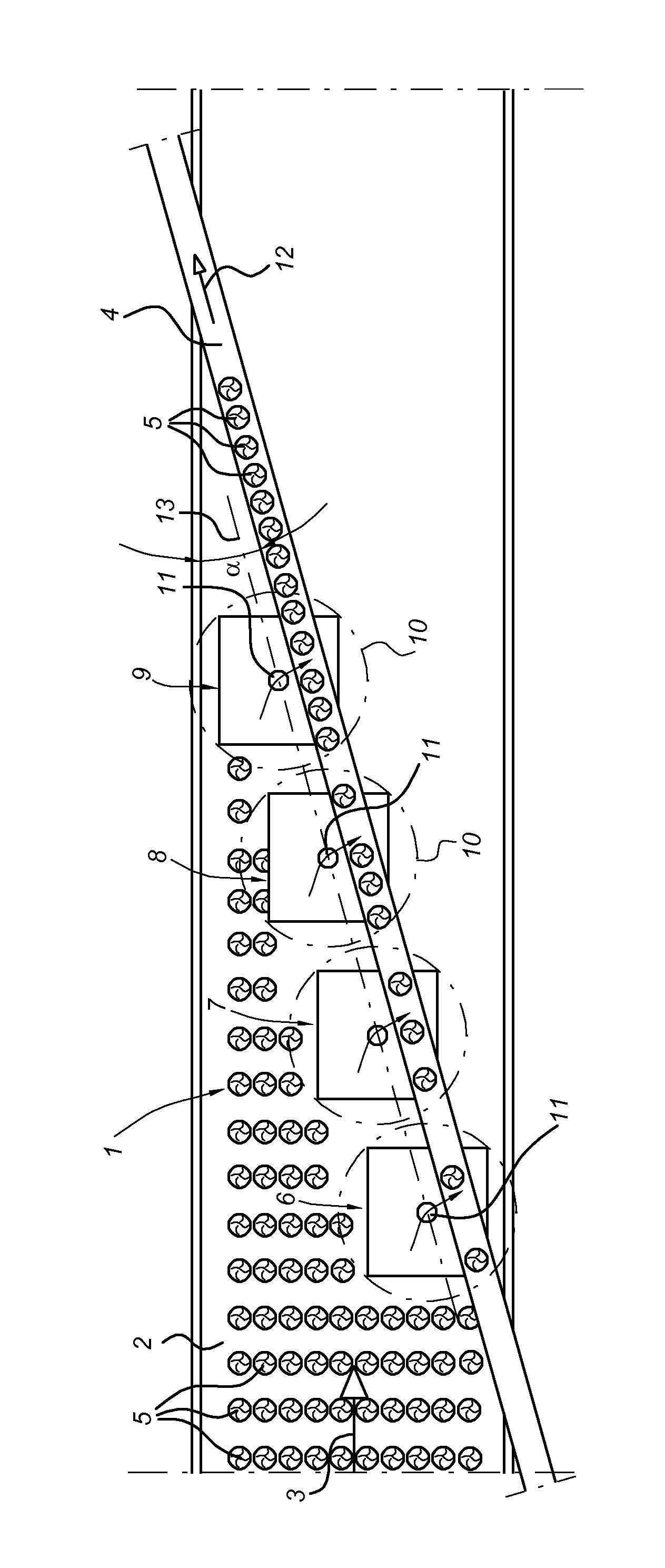Transfer assembly
- Summary
- Abstract
- Description
- Claims
- Application Information
AI Technical Summary
Benefits of technology
Problems solved by technology
Method used
Image
Examples
Embodiment Construction
[0022]In the sole FIGURE, reference numeral 1 denotes the transfer assembly according to the invention. It consists of a supply conveyor 2 which moves a large number of products 5 in the direction of arrow 3 which are arranged in a number of parallel rows. A discharge conveyor 4 is arranged in such a manner that it is situated above the supply conveyor 2 and is moved at greater speed than the supply conveyor in the direction of arrow 12. The return part of belt 4 may be below the conveyor belt 2 or between the supply and return part of belt 2. A number of transfer robots are present, such as pick-and-place robots 6-9. In this case, the two “outermost” robots 6 and 9 are denoted as first robot 6 and second robot 9. According to the present invention, the intermediate transfer robots 7 and 8 are positioned such that they are not situated on a side of the supply conveyor, but in an area which extends at an angle with respect to the supply conveyor. In other words, the range of each rob...
PUM
 Login to View More
Login to View More Abstract
Description
Claims
Application Information
 Login to View More
Login to View More - R&D
- Intellectual Property
- Life Sciences
- Materials
- Tech Scout
- Unparalleled Data Quality
- Higher Quality Content
- 60% Fewer Hallucinations
Browse by: Latest US Patents, China's latest patents, Technical Efficacy Thesaurus, Application Domain, Technology Topic, Popular Technical Reports.
© 2025 PatSnap. All rights reserved.Legal|Privacy policy|Modern Slavery Act Transparency Statement|Sitemap|About US| Contact US: help@patsnap.com


